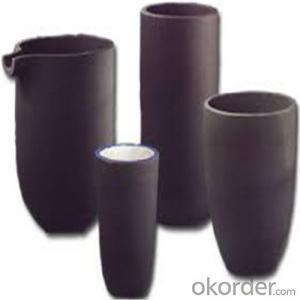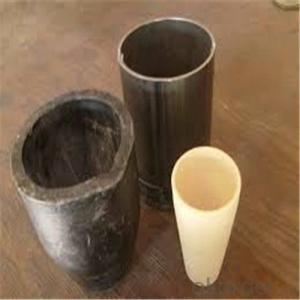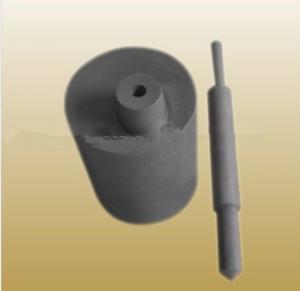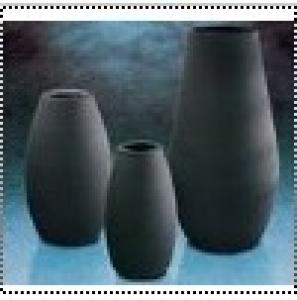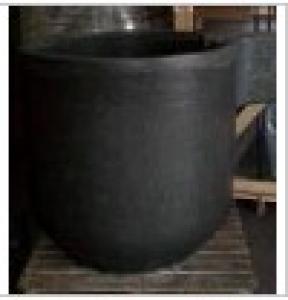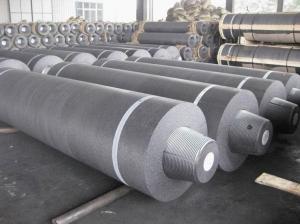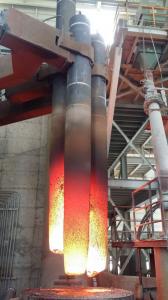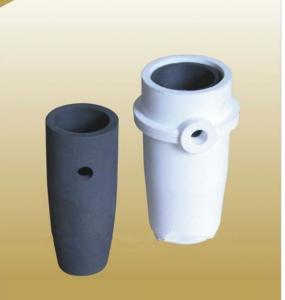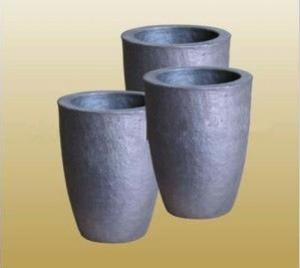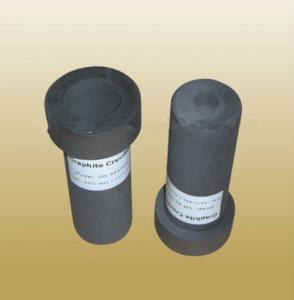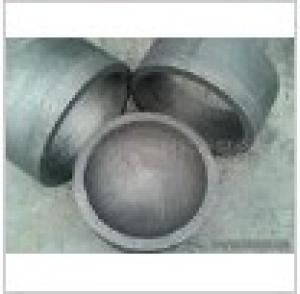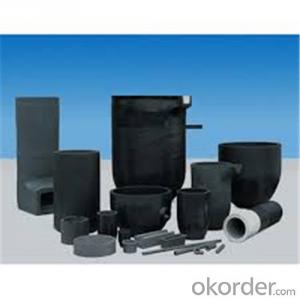SiC Crucibles For Melting Aluminium And Copper, Brass with High Heat Resistance
- Loading Port:
- Shanghai
- Payment Terms:
- TT OR LC
- Min Order Qty:
- 1 pc
- Supply Capability:
- 1000 pc/month
OKorder Service Pledge
OKorder Financial Service
You Might Also Like
Quick Details for SiC Graphite Crucibles
| Type: | High Strength, graphite crucible crucible | Application: | melting metal | Height: | as your requirements |
| Composition: | High Pure | Top Diameter: | 10-600mm | Bottom Diameter: | 10-1000mm |
| Place of Origin: | China (Mainland) | Brand Name: | Model Number: | ||
| Color: | Black grey | Si3N4%: | 5min | Fe2O3%: | 0.7max |
| C%: | 30-45 | Apparent porosity: | 30max | Refractoriness: | 1680 |
| Bulk Density: | 1.71min | Using life: | >5000 hours | MAX temperature: | 1600c |
Packaging & Delivery
| Packaging Details: | Seaworty packing or as per customer's detail requirement of graphite crucible. |
| Delivery Detail: | within 20-30 days after confirm order of graphite cru |
SiC Graphite Crucibles For Melting Aluminium And Copper, Brass
Product Description
Specifications for Graphite Silicon Carbide Crucible For Aluminum Melting :
1.Long working lifetime: its working lifetime is increased 3-5 times over normal clay-crucible due to the compact body formed under high pressure.
2.High thermal conductivity: high-density body and low apparent porosity greatly improve its heat conductivity.
3.New-style materials: new heat conduction material ensures faster heat conductivity and pollution-free product, reduces adherent slag.
4.Resistance to corrosion:better anti-corrosion than normal clay-crucible.
5.Resistance to oxidation: advanced process dramatically improves its oxidation resistance, which ensures persistent heat conductivity and long working lifetime.
6.High-strength: high-density body and logical structure make the product better compression property.
7.Eco-friendly: energy-efficient and pollution-free, not only ensure metal product purity, but also ensure sustainable development on environment.
8.Multi-function: Can be used in induction graphite crucible furnace
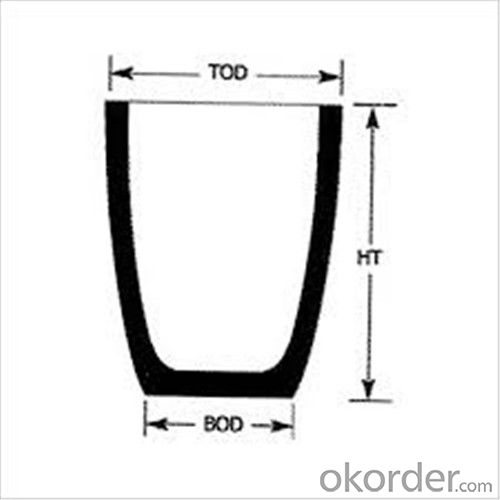

Features of SiC 95% silicon carbide sic crucible
1. resistance to deformation at high temperature,
2. thermal shock resistance, wear resistance, corrosion resistance.
3. anti-oxidation, anti- erosion.
Usage of SiC 95% silicon carbide sic crucible
electricity and steel slag trench,
coal chemical and mining transport pipeline.
- Q:How does the erosion resistance of graphite affect the performance of a crucible?
- The erosion resistance of graphite plays a significant role in determining the performance of a crucible. Graphite is known for its excellent erosion resistance, which refers to its ability to withstand the wearing away or gradual destruction caused by various factors such as heat, chemicals, and mechanical forces. In the context of a crucible, which is a vessel used for melting and holding substances at high temperatures, erosion resistance is crucial for maintaining the integrity and longevity of the crucible. The erosion resistance of graphite ensures that the crucible can withstand the harsh conditions it is exposed to during the melting process. Firstly, the erosion resistance of graphite helps to prevent the crucible from deforming or cracking under high temperatures. Graphite has a high melting point and can withstand extreme heat, which makes it an ideal material for crucibles. Without erosion resistance, the crucible would be prone to thermal shock, resulting in cracking or failure. Secondly, erosion resistance is important for preserving the chemical stability and purity of the crucible. Graphite is chemically inert, meaning it does not react with most substances. This property allows the crucible to hold a wide range of materials without the risk of contamination. Additionally, the erosion resistance of graphite ensures that there is minimal loss of graphite particles into the molten materials, preventing impurities from being introduced into the final product. Furthermore, the erosion resistance of graphite contributes to the crucible's durability and overall performance. Graphite crucibles are often subjected to mechanical stresses, such as stirring or pouring of molten substances. The erosion resistance of graphite prevents the crucible from wearing away or deteriorating over time, ensuring that it can be used repeatedly without compromising its functionality. In summary, the erosion resistance of graphite is crucial for the performance of a crucible. It helps to maintain the structural integrity, withstand high temperatures, preserve chemical stability, and enhance the durability of the crucible. Without erosion resistance, the crucible would be prone to failure, leading to potential contamination, loss of material, and reduced lifespan.
- Q:How long is the service life of the cast iron crucible?
- The service life of cast iron crucibles for electric furnaces ranged from 1 months to 2 months.
- Q:What are the main components of a graphite crucible?
- Engine cylinder head, brake, air filter, piston, radiator, steering wheel frame, and shell of mobile phone in electronic product, etc..The graphite crucible also needs attention when it is used: because the bottom of the crucible is very small, the crucible needs to be put on the graphite pad or the clay triangle when it is heated. The graphite crucible can be heated directly and can not be cooled immediately after heating and removed with a crucible clampDo not put it on the cold metal table to prevent it from breaking due to rapid cooling. Notice that the above points will extend the life of the graphite crucible.
- Q:What is the purpose of using a graphite crucible?
- The purpose of using a graphite crucible is to contain and withstand high temperatures during various industrial processes. Graphite is a highly refractory material, meaning it can withstand extreme heat and does not easily melt or react with surrounding materials. This makes graphite crucibles ideal for applications such as metal melting, casting, and purification. Graphite crucibles are commonly used in foundries, laboratories, and manufacturing facilities where processes require temperatures exceeding the melting point of most metals. The crucible acts as a container for the molten metal, preventing it from escaping and ensuring precise control over the melting process. Furthermore, graphite crucibles have excellent thermal conductivity, allowing efficient heat transfer to the material being melted. This helps to achieve uniform heating and consistent melting, resulting in high-quality end products. The high thermal shock resistance of graphite also enables rapid heating and cooling cycles without causing damage to the crucible. Graphite crucibles are also chemically inert, meaning they do not react with most substances. This makes them suitable for handling various corrosive materials or compounds that could potentially react with other materials. The inert nature of graphite ensures that the purity and integrity of the materials being processed are maintained. In summary, the purpose of using a graphite crucible is to provide a durable, heat-resistant, and chemically inert container for high-temperature processes such as melting, casting, and purification. Its ability to withstand extreme heat, excellent thermal conductivity, and chemical inertness make graphite crucibles essential tools in a wide range of industrial applications.
- Q:Can a graphite crucible be used for aluminum melting?
- Yes, a graphite crucible can be used for aluminum melting. Graphite has a high melting point and excellent thermal conductivity, making it suitable for the high temperatures required to melt aluminum. Additionally, graphite crucibles are highly resistant to chemical reactions with aluminum, ensuring a clean and efficient melting process.
- Q:Can a graphite crucible be used for melting einsteinium?
- No, a graphite crucible cannot be used for melting einsteinium. Einsteinium is a highly radioactive element with a melting point of 860 degrees Celsius. Graphite crucibles typically have a maximum working temperature of around 3000 degrees Celsius, which is sufficient for most metal melting applications. However, einsteinium's extreme radioactivity poses significant health risks, and it requires specialized handling and containment procedures. Additionally, the properties of einsteinium make it highly reactive and corrosive, which can cause damage to the graphite crucible. Therefore, a graphite crucible is not suitable for melting einsteinium, and alternative materials and containment methods must be used.
- Q:Graphite crucible used six or seven times on how bad?
- And the solution in the barrier, is it right?. The main check temperature should not be too fast, rapid cooling.
- Q:What are the differences between quartz crucibles and glass crucibles in appearance, properties, uses, etc.?
- What are the differences between quartz crucibles and glass crucibles in appearance, properties, uses, etc.?
- Q:How is a graphite crucible used in the production of carbon composites?
- A graphite crucible is essential in the production of carbon composites as it serves as a container to hold and melt the raw materials that are used to create the composites. The crucible is made of graphite because it is able to withstand extremely high temperatures without melting or reacting with the molten materials. Once the materials are melted in the crucible, they can be poured or molded into the desired shape to form the carbon composite.
- Q:Can graphite crucibles be used with induction melting furnaces?
- Yes, graphite crucibles can be used with induction melting furnaces. Graphite crucibles have excellent thermal conductivity and high melting points, making them suitable for use in induction melting furnaces. The high conductivity allows for efficient heat transfer, ensuring uniform heating of the metal being melted. Additionally, graphite crucibles have good resistance to thermal shock, which is important in the intense heat environment of an induction melting furnace. However, it is essential to ensure that the graphite crucible is compatible with the specific metal being melted to avoid any chemical reactions or contamination.
1. Manufacturer Overview |
|
|---|---|
| Location | |
| Year Established | |
| Annual Output Value | |
| Main Markets | |
| Company Certifications | |
2. Manufacturer Certificates |
|
|---|---|
| a) Certification Name | |
| Range | |
| Reference | |
| Validity Period | |
3. Manufacturer Capability |
|
|---|---|
| a)Trade Capacity | |
| Nearest Port | |
| Export Percentage | |
| No.of Employees in Trade Department | |
| Language Spoken: | |
| b)Factory Information | |
| Factory Size: | |
| No. of Production Lines | |
| Contract Manufacturing | |
| Product Price Range | |
Send your message to us
SiC Crucibles For Melting Aluminium And Copper, Brass with High Heat Resistance
- Loading Port:
- Shanghai
- Payment Terms:
- TT OR LC
- Min Order Qty:
- 1 pc
- Supply Capability:
- 1000 pc/month
OKorder Service Pledge
OKorder Financial Service
Similar products
New products
Hot products
Related keywords

